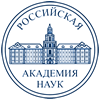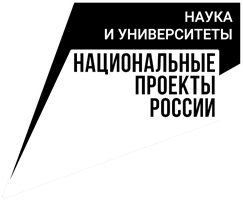49th meeting of the seminar
«Supercomputer simulation of the Earth system»
The seminar is devoted to various aspects of the application of supercomputer modeling methods for solving weather and climate forecasting problems.
Seminar co-organized organizations
 |
Lomonosov Moscow State University (MSU) |
 |
Federal Service for Hydrometeorology and Environmental Monitoring of Russia |
 |
Russian Academy of Sciences |
Seminar Leader:
 |
V.A. Sadovnichy academician, rector of Lomonosov Moscow State University |
Co-leaders of the seminar:
 |
R.M. Wilfand Doctor of Technical Sciences, Scientific Director of the Hydrometeorological Center of Russia |
 |
S.A. Dobrolubov Corr. RAS, Dean of the Faculty of Geography, Lomonosov Moscow State University |
 |
N.G. Yakovlev Doctor of Physics and Mathematics, Leading Researcher, Institute of Numerical Mathematics, RAS |
 |
V.M. Stepanenko Doctor of Physics and Mathematics, Deputy Director of RCC MSU |
Scientific Secretary of the seminar:
 |
M.I. Varentsov Ph.D., senior researcher of RCC MSU |
Seminar topics cover the following main areas (but not limited to them):
- Methods and technologies for using supercomputer computing in interdisciplinary problems of environmental sciences.
- Mathematical modeling of processes in the climate system.
- Application of supercomputer technologies to solve problems of weather forecasting.
- Application of supercomputer technologies to solve problems of assessing climate change and their consequences for the environment.
- Application of supercomputer technologies for the complex solution of problems of environmental protection, including natural hazards and man-made disasters.
PROGRAM
17:30 (GMT+3)
| A.V. Eliseev | Faculty of Physics, Lomonosov Moscow State University; Obukhov Institute of Atmospheric Physics of RAS; KFU, Institute of Ecology and Nature Management |
HIERARCHY OF EARTH SYSTEM MODELS
Earth system models (ESMs) are models in which, along with the physical components of the Earth system (atmosphere, ocean, sea ice, active land layer), they also contain modules for describing (bio)geochemical processes in the Earth system, as well as, in some cases, socio-economic processes. The report discusses the hierarchy of such models.
At the top of this hierarchy are General Circulation Models (GCMs), which are able to represent each of the considered components in detail, but are characterized by high computational cost. The simplest ISMs are energy balance models (EBM) and radiative-convective models (RCM), with spatial resolution and taking into account only a small number of the most important climate-forming processes. Despite this, EBMs are also characterized by a number of advantages - first of all, by simple and understandable physics. In turn, RCMs are useful for studying a number of processes taken into account in the GCM and for setting up the corresponding blocks. In addition, a class of ISM of intermediate complexity is singled out, which take into account most of the processes presented in the GCM (and sometimes additional ones), but with a number of simplifications. The advantage of this class is the ability to integrate the model for periods of tens of thousands of years or more.
The report discusses all these classes of models with an explicit discussion of their features. Additionally, projects are discussed at the same time models of different classes are used.
The meeting of the seminar will be held in the form of a webinar on the Zoom platform.
Link to the conference:
https://us02web.zoom.us/j/89534627536?pwd=ckRXRzIrdnZsVnR1UXN3dmI0eUZldz09
Meeting ID: 895 3462 7536
Passcode: 172804
To simplify our work during the seminar, please do the following: check in advance that Zoom works for you (in the Zoom application settings you can check the quality of the speakers and microphone) and enter your last name, first name in your profile settings and middle name in full (this can be done on your profile page (https://us02web.zoom.us/profile) - in this case, conference colleagues will see how to contact you.

